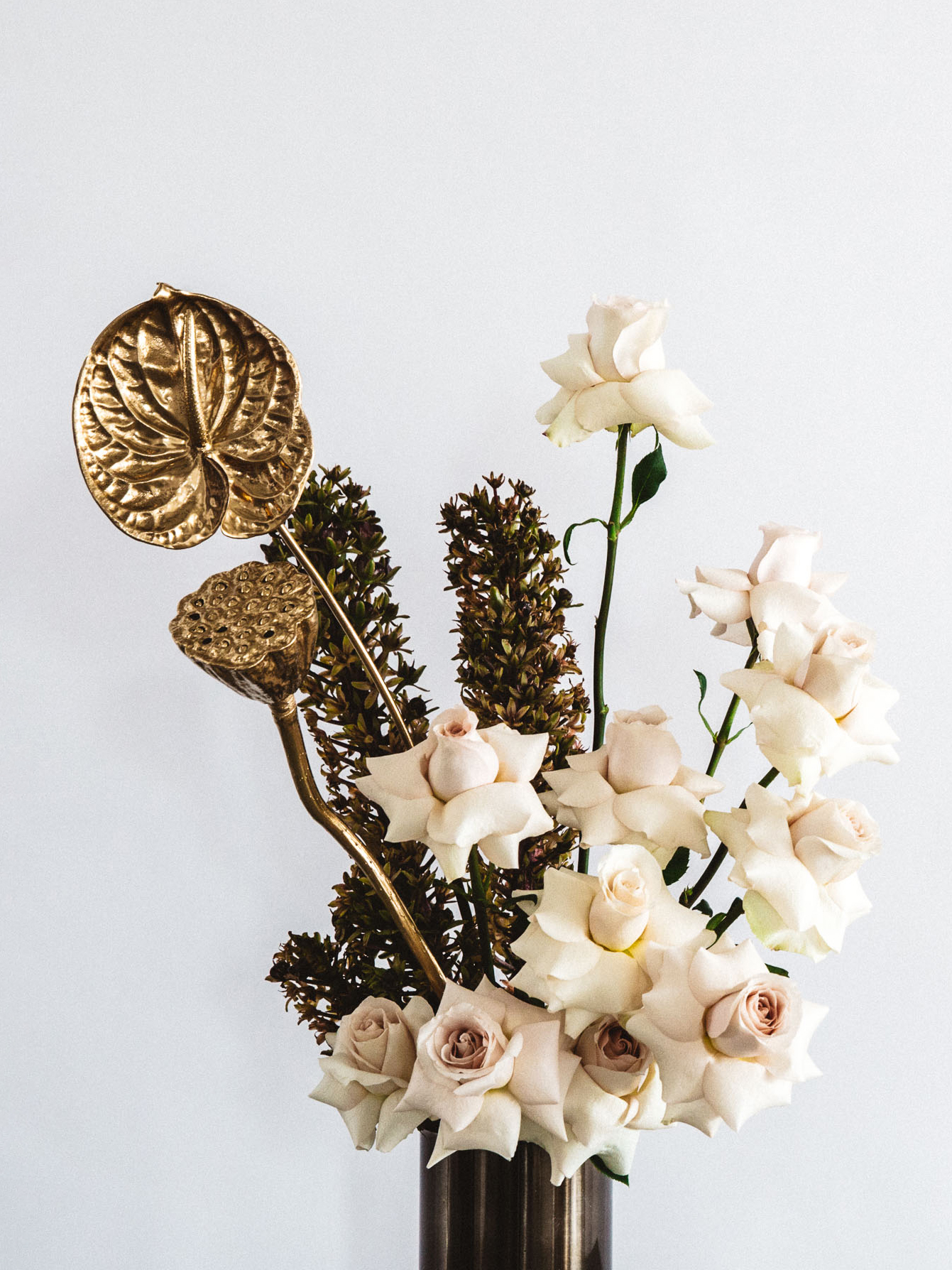We may earn revenue from the products available on this page and participate in affiliate programs.
Flowers are tougher than we give them credit for: They can be molded into sculptures, broken down into dyes, and dried in books, and those aren’t their only secret powers. They also hold paint color like champs. Artful floral arrangements have been huge this wedding season, from single metallic anthuriums to rainbow clouds of baby’s breath. “It’s one way to steer away from the classic ‘white and green’ ceremony,” says Kate Esslemont, cofounder of Sir Botanical. We’ve seen the pros do it, and now it’s our turn to put this DIY to the test. Here, Esslemont explains how to create the otherworldly blooms every cool florist is loving right now.
The Paint

All the supplies you need for this project (paint, a plastic tarp for catching drips, a face mask for avoiding the fumes) are waiting for you at the hardware store. “There is a type of floral spray paint you can use. However, we find that a high-quality, name-brand product works best,” she says. Metallics like silver and rose gold are guaranteed crowd-pleasers, but so are pastels mixed with punchy hues. “We created a large baby’s breath cloud with a mix of light pink and electric blue. It’s definitely up there with our favorites,” says Esslemont.
The Varieties to Try

For a big impact on a low budget, you can’t go wrong with baby’s breath. The voluminous blossoms hold dye extremely well, and you can typically score a bunch for under $10. Esslemont is also a big fan of spraying Italian Ruscus, large tropical palms, and anthurium. Roses are another option, but we suggest considering only spraying the stems and leaving the petals untouched for longer-lasting results. Scabiosa, ranunculus, dahlias, and most other wildflowers are on the no-spray list. “They’ll die pretty quickly, which we’ve learned the hard way,” says Esslemont.
The Method
Before you fully commit to a color, test it out on a small petal and let it sit for a couple of hours to make sure the tint holds. Because you’ll be spraying it and not actually applying the paint with a brush, you’ll get full coverage pretty fast. “A light spray is generally enough so that the bloom doesn’t suffocate.”
The Big Picture

While you can certainly paint your entire bouquet (or altar, for that matter), guests will really be able to admire your handiwork at the dinner table. “If you have touches of gold foliage, accompany that with gold cutlery. If you have clouds of blush baby’s breath on your table, add in dusty pink napkins,” Esslemont shares. Experiment with slight variations in tones for a modern, monochromatic look.
The Aftermath
Depending on the kind of flowers you choose to paint, your arrangements can last well beyond the honeymoon. Anthurium might only look good for another two days, but Italian Ruscus could last up to four weeks. Baby’s breath can hold its shape for months (!) without water. “It’s the gift that keeps on giving,” says Esslemont. We predict love at first sight.
See more stories like this: Sophie Turner’s Florist Predicts 4 Fall Bouquet Trends Affordable Wedding DIYs That Look Way More Luxe Than They Are The Blooms That Make a Fall Wedding Dramatic in the Best Way

